SUMMARY
This is AI generated summarization, which may have errors. For context, always refer to the full article.
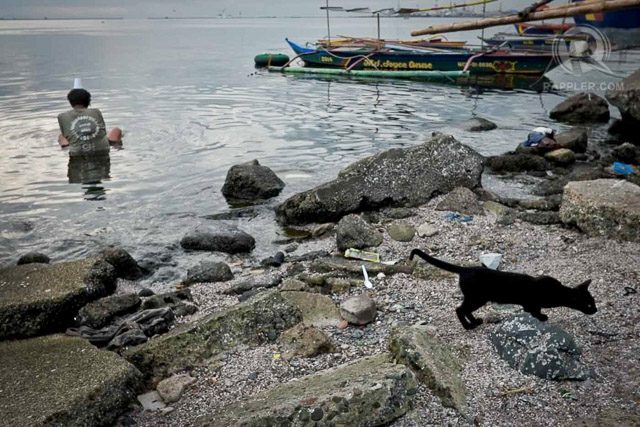
MANILA, Philippines — After a week of strange absence, they are back to sleeping in the “longest bedspace in the world.” Or at least, that is how 48-year-old Melchor Dimagiba refers to the entire Baywalk stretch, along Roxas Boulevard in Manila.
Dimagiba, along with many of Manila’s homeless, call Baywalk home. They live in pushcarts parked underneath the palm trees that dot Manila Bay, in flimsy lean-tos along the seawall, and in makeshift rafts floating along the murky, black waters of the bay. Others even seek shelter under the naked sky and make bed of the cold concrete.
On any given day, they are omnipresent, scattered along the entire stretch of Baywalk, from the US Embassy along T.M. Kalaw to the Cultural Center of the Philippines along Vito Cruz.
Perhaps, there are a hundred or so of them. Strange how a day before the arrival of Pope Francis in Manila, 100 or so people seemed to have vanished. They seemed to have magically disappeared from the same place where the sea swallows the sun.
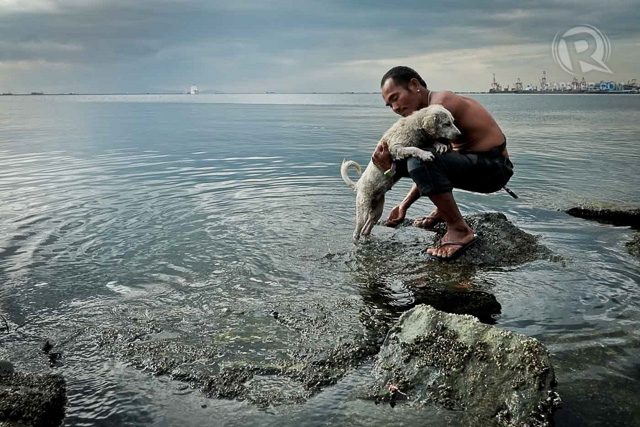
“They told us to leave,” says Arlene Consigna, 49, a Baywalk “bedspacer” for about 3 years.
By “they” she means “all of them”– Manila City Hall’s Department of Public Safety, the Department of Social Welfare and Development, the Metropolitan Manila Development Authority, and the Philippine National Police.
But they found secret hiding places across Baywalk, in the forgotten back alleys of Manila’s former red light district. They have learned to make themselves scarce. And they have learned to become invisible in a sea of 6 million people that came to see Pope Francis.
This is not the first time informal settlers were driven away from Baywalk. When US President Barack Obama came to Manila for a two-day state visit, they were also asked to leave “for security reasons.”
Dimagiba claims that during the Obama visit, he was even accosted by the DSWD and taken to Boys’ Town in Marikina, where he was allegedly forced to stay for a week.
Rogelio Daang, 52, has likewise been “detained.” He claims to have spent the night in a DSWD facility in Manila.
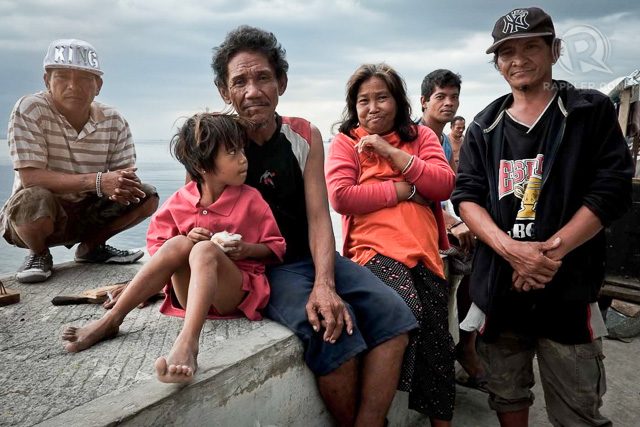
“But we also want to see the Pope,” Consigna says, half-protesting, half-pleading.
Consigna narrates that during the second Philippine visit of Pope John Paul II in 1995, she was even able to shake the pontiff’s hand. She is now left wondering why the so-called “Pope of the poor” has been kept away from Manila’s impoverished lot.
“We were told not to go near people wanting to see Pope,” Consigna claims. “But we were able to sneak in, and catch a glimpse of Pope Francis. He even waved his hand at us.”
Perhaps, like any other Catholic who has been and felt the presence of Pope Francis, Consigna felt blessed to have experienced such a rare moment.
Ruben Ardino, another banished Baywalk “bedspacer” and devotee of the Sto Nino, climbed the roof of his pedicab and waved a statue of the Child-Jesus at the Pope, when the papal convoy was turning left from Roxas Boulevard toward Quirino Avenue. He, too, felt blessed, when the pontiff wave back at the crowd. He believed that the wave was for him.
“I got this Sto Nino on Christmas day. It was found on a garbage dump,” says Ardino, who tries to make divine sense of the religious significance of finding a statue of the Child-Jesus on the supposed birthdate of Christ.
Other than the cross, the image of the Child-Jesus, popularly known in the Philippines as the Sto Nino, is the first Christian religious icon to be introduced in the country. It is also widely venerated throughout the country, with various festivals being held in its honor.
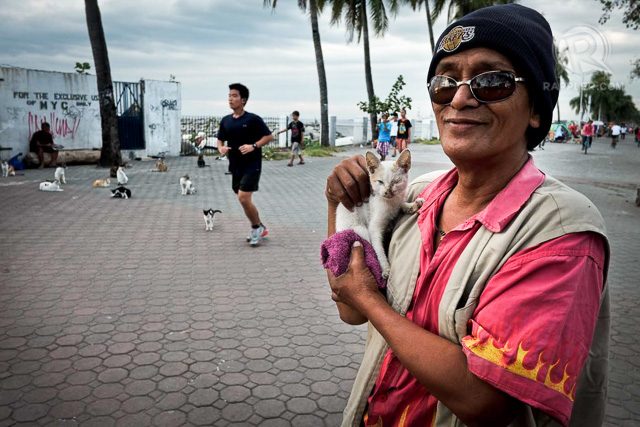
Meanwhile, just past Quirino Avenue, right outside the Manila Yacht Club, Lito Eredia feeds his pet cats, over 20 strays.
“I wasn’t able to feed them last week,” laments Eredia, who was also asked to leave Baywalk during the Papal Visit.
There was an immense sadness when he speaks of the time he was forced to leave behind his beloved pet cats.
“They didn’t have any other place to go. But I couldn’t even get near them,” he says while stroking the head of a kitten sitting pensively atop his rolling sari-sari store, which had images of Jesus Christ and the Virgin Mary, and a small statue of the Sto Nino.
Some 3 blocks away from where Eredia’s cats are feeding is the Apostolic Nunciature, which is near the corner of Quirino and Taft Avenues.
The nunciature, home to the Pope during his 5-day Philippine visit, has now become a tourist attraction of sorts. Lilia Alcantara looks on as people take souvenir selfies. Her possessions, stashed in an assortment of plastic bags, lay on the ground, by her feet.
“Somebody just stole my money,” Alcantara claims, gesturing what seems to be an inch thick of bills.
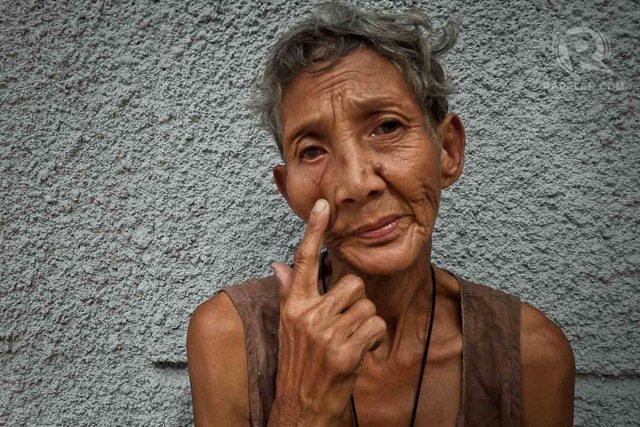
Alcantara is unlike other homeless people in the city. She is an urban nomad, moving from place to place. But she says she frequents this area, “at least once a week.” But like the informal settlers in Baywalk, she, too, was prohibited from staying outside the nunciature.
“If I was given a chance to talk to the Pope, I’ll ask him to cure my cataract,” she says. She then looks up at the high walls of the nunciature, where passersby may still see the overhead railings of the popemobile peeking from its high green gate.
Meanwhile, Consigna says she’ll tell Pope Francis to bless the poor Filipino folk, a blessing that she hopes will help them rise above their poverty. Many of the Baywalk “bedspacers” are unanimous in saying that all they want is a small house to call their own and the means to make a living.
“I’ve long dreamed of being relocated,” says Eredia. “But my cats have to stay with me.”
The purring, hissing, and feeding frenzy of the stray cats of Baywalk ends at about the same time as the sun sets over Manila Bay. And when night falls, Baywalk’s “bedspacers” are again left in the dark.
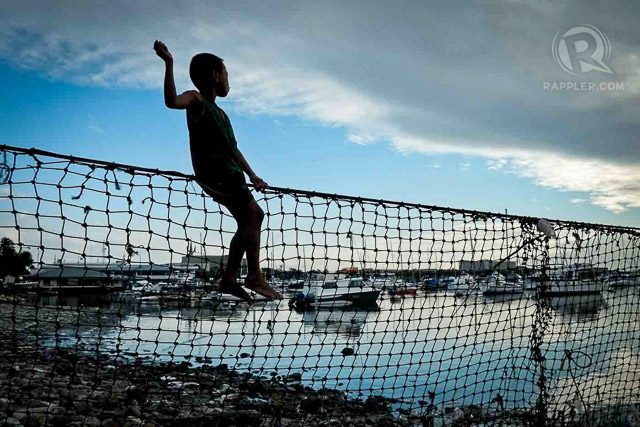
– Rappler.com
Add a comment
How does this make you feel?
There are no comments yet. Add your comment to start the conversation.